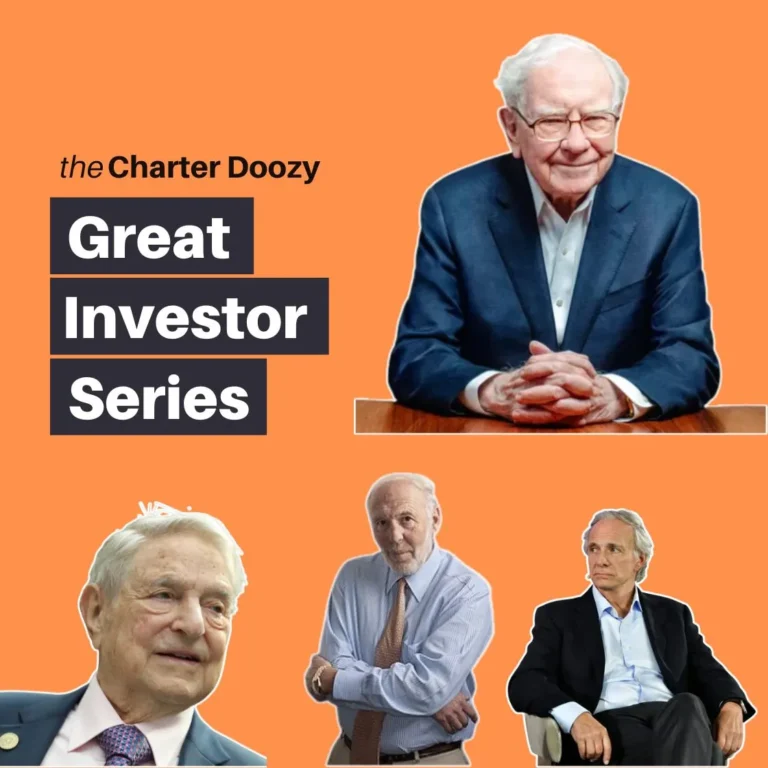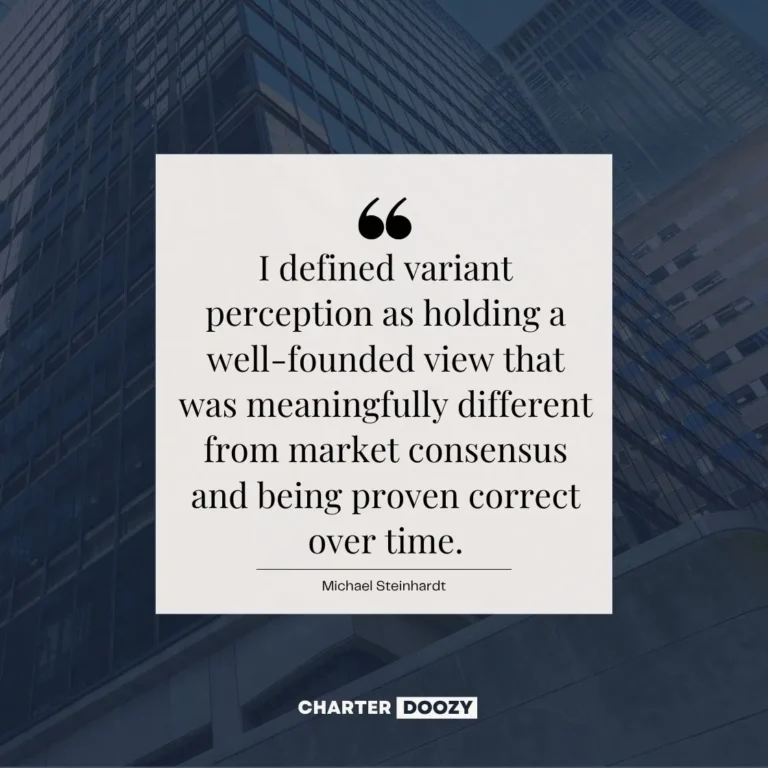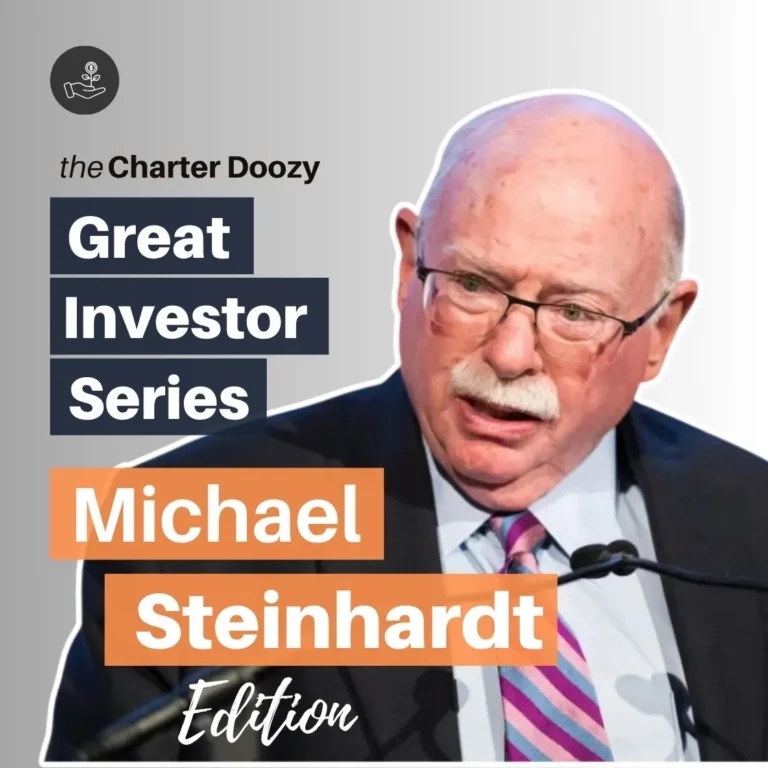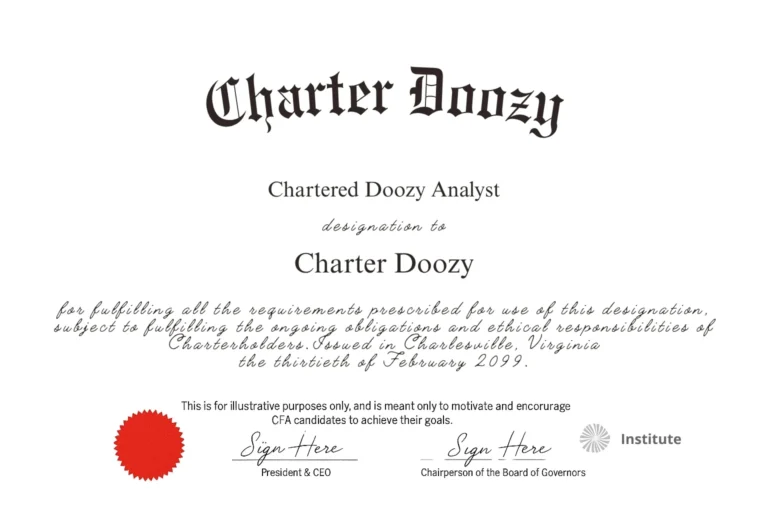⭐ Michael Steinhardt – Quick Facts
“Isn’t That Obvious?”
In the high-octane world of Wall Street, some traders live for the thrill of risk. Others live for the intellectual conquest — for solving the puzzle before anyone else even realizes it’s there. Michael Steinhardt, one of the true titans of the hedge fund industry, once captured his entire investing philosophy in three words: “Isn’t that obvious?”
It’s the question he’d pose to his analysts — often with withering impatience — whenever they presented a trade idea. If the logic was watertight and the evidence strong, Steinhardt would nod and approve the position. But if the story was murky, he’d cut them off and snap: “You can’t invest real money based on maybe.”
Few investors have embodied both the cerebral intensity and relentless drive of Michael Steinhardt. Over a career spanning decades, he delivered returns that reshaped expectations for what hedge funds could achieve. His reputation for ferocious intellect, aggressive trading, and absolute conviction made him one of the earliest and most successful macro hedge fund managers — a man whose style still echoes in the practices of modern macro giants.

Want to think like the world’s best investors?
Dive into the mindsets, philosophies, and powerful quotes from legends like Soros, Fisher, Dalio, and more. Learn timeless strategies that turn insight into wealth – and transform how you see the markets.
Meet Michael Steinhardt
Born in Brooklyn, New York, in 1940, Steinhardt grew up the son of Sol Frank Steinhardt, a man with a complicated past linked to the world of bookmaking and gambling. Steinhardt inherited his father’s love for odds and outcomes — but channeled it into markets rather than racetracks.
After earning a degree in economics from the Wharton School at the University of Pennsylvania, he began his career as a research analyst at Calvin Bullock and then Loeb, Rhoades. But he quickly realized that the constraints of institutional money management were too rigid for his ambitions.
In 1967, with just $7 million under management — a sum that included capital from the Tisch family and other prominent investors — he co-founded Steinhardt, Fine, Berkowitz & Co. It would become one of the first true hedge funds, decades before “hedge fund” was a household term.
Unlike value-focused legends like Benjamin Graham or growth aficionados like Philip Fisher, Steinhardt’s style was pure macro and opportunistic trading. He scoured markets for mispricings across asset classes, seeking high-conviction bets and often employing significant leverage. Colleagues and rivals dubbed him “the quintessential trader’s trader.” Yet his approach was underpinned by rigorous analysis and the conviction that market inefficiencies could be found — and exploited — with enough intellectual firepower.

The Steinhardt Philosophy
Obsession with Variant Perception
If there’s one phrase that encapsulates Steinhardt’s method, it’s “variant perception.” He constantly searched for situations where his view differed sharply from consensus — and where he believed he was right. This is strikingly similar to what CFA candidates learn in the context of behavioral finance and market expectations. To Steinhardt, making money required not just identifying truths but identifying truths that the market hadn’t yet priced in.
He articulated it best himself:
“The hardest thing in investing is to figure out what is already known — and then figure out what surprises are still possible.”
That mindset is fundamentally tied to the CFA curriculum’s emphasis on market efficiency, behavioral biases, and mispricing opportunities.
Aggressive Trading and Rapid Reversals
Steinhardt’s trading style was notoriously aggressive. Unlike buy-and-hold investors, he was willing to reverse positions in hours if new information emerged. He’d famously go from being the largest buyer of an asset one day to its largest seller the next. That agility demanded deep knowledge of market mechanics, liquidity conditions, and the psychology of market participants.
His willingness to act quickly — and with size — set him apart. As he put it:
“I’ve always believed that the ability to change one’s mind is essential to success.”
This philosophy ties directly into the CFA’s teachings on active management, portfolio rebalancing, and risk management in volatile conditions.
Information Edge and Mosaic Theory
Long before the term “mosaic theory” became prominent in CFA ethics readings, Steinhardt was practicing it. He encouraged his analysts to gather fragments of information — regulatory filings, trade flows, macro data, political developments — and assemble them into a bigger picture. He believed that significant mispricings arose when the market failed to connect disparate pieces of information.
Yet he was also acutely aware of regulatory lines. His fund became entangled in investigations in the 1990s related to Treasury auction bidding practices (more on this later), highlighting how a quest for an informational edge must navigate the ethical boundaries that CFA candidates study so closely.
High Conviction, High Concentration
Steinhardt often held highly concentrated positions. He believed diversification was sometimes the refuge of the uncertain. If he was right, he wanted the maximum payoff; if wrong, he wanted to know quickly so he could exit.
That’s a sharp contrast to the CFA’s more traditional teachings on diversification benefits. Yet even here, there’s overlap: Steinhardt’s concentration was the result of rigorous conviction, not reckless gambling.
Iconic Stories from Steinhardt’s Career
The 1980s Bond Rally
Perhaps one of Steinhardt’s most legendary trades came in the early 1980s, when inflation fears dominated the bond markets. After Paul Volcker took over the Fed and signaled a crackdown on inflation, Steinhardt predicted rates would fall dramatically.
He took massive long positions in Treasury bonds. As rates dropped and bonds soared, Steinhardt’s fund booked staggering gains. In a single year, his firm returned more than 100% — an almost unthinkable performance.
This episode is textbook CFA material: it’s a case study in macroeconomic analysis, monetary policy shifts, duration risk, and the sensitivity of bond prices to interest rate changes. For candidates wrestling with Level I and II fixed income, it’s an inspiring reminder that theory can translate into transformative real-world profits.
The Treasury Auction Scandal
Not all of Steinhardt’s headlines were positive. In the early 1990s, the U.S. Treasury accused several Wall Street firms — including Steinhardt Partners — of colluding to manipulate Treasury auctions. The government alleged that certain funds were cornering supply in new issues, artificially driving up prices.
Though Steinhardt settled the case without admitting wrongdoing and paid significant fines, the incident tarnished his reputation and highlighted the razor-thin line between aggressive information gathering and improper market behavior.
For CFA candidates, this is a living example of the curriculum’s focus on ethics, market manipulation, and fair dealing. It’s a reminder that even legendary investors are accountable to regulatory boundaries.
The Decision to Retire
In 1995, after nearly three decades of running outside capital, Steinhardt shocked the financial world by announcing his retirement and returning money to investors. His stated reason was simple: exhaustion. The stress of constant trading, enormous volatility, and the pressure to deliver extraordinary returns had taken its toll.
He returned for a brief stint running WisdomTree Investments but never again managed money with the same intensity.

Lessons for CFA Candidates and Professionals
Variant Perception is Critical
CFA candidates often study market expectations and valuation models. Steinhardt’s career is a practical testament to why variant perception matters. Alpha doesn’t come from consensus views — it emerges when one’s analysis diverges from the crowd and is ultimately proven right.
Understanding how to identify variant perceptions — and manage the risks associated with non-consensus bets — is core to advanced portfolio management, security analysis, and behavioral finance.
Information Is Power — But Boundaries Matter
Steinhardt’s use of the mosaic theory underscores how professionals can piece together public and non-material nonpublic information to form a differentiated view. However, his legal troubles are a cautionary tale. CFA professionals must respect the lines between diligent research and insider trading.
The Ethics and Standards of Professional Conduct that CFA candidates study are not academic abstractions; they are the rules that separate legal innovation from illegal manipulation.
Flexibility and Speed
Steinhardt’s readiness to reverse trades in a heartbeat offers a lesson in humility. Markets change quickly. Being stubborn can be fatal. CFA candidates learn about stop-loss orders, portfolio rebalancing, and active management precisely because flexibility is essential in volatile markets.
High Conviction vs. Diversification
Steinhardt’s concentrated positions teach that conviction should be backed by analysis — and that diversification is not always the right answer if you have a legitimate edge. Yet this style carries enormous career risk. For CFA professionals, the lesson is clear: know your risk tolerance, your clients’ mandates, and the potential consequences of concentration.
Psychological Fortitude
The mental stamina required to run a fund like Steinhardt’s is immense. Markets challenge your ego, test your patience, and exploit your biases. Steinhardt’s success — and eventual retirement — reveal the emotional toll high-stakes investing can exact. Emotional intelligence and psychological resilience are as important as technical skills, something the CFA curriculum increasingly acknowledges.
Controversies and Debates
Steinhardt’s style has prompted debates that remain relevant today. Can macro trading produce sustained alpha in a world awash with algorithmic strategies and central bank interventions? Or has macro become too crowded and competitive?
Moreover, Steinhardt’s regulatory issues continue to cast a shadow over his legacy. Some critics argue his aggressive approach flirted with ethical boundaries, raising questions about whether such tactics would survive today’s far stricter regulatory environment.
Yet his supporters maintain that his returns — annualized at over 24% net for almost three decades — speak to skill, discipline, and a trading acumen few have ever matched.
Further Reading and Resources
For those eager to dig deeper into Steinhardt’s world:
- No Bull: My Life In and Out of Markets – Michael Steinhardt’s own autobiography, blending personal history with investing wisdom.
- More Money Than God by Sebastian Mallaby – Contains an excellent profile of Steinhardt and his place in hedge fund history.
- Various interviews and conference appearances by Steinhardt, although he’s notoriously private and selective about public commentary.
Find Your Own Edge
Michael Steinhardt’s career stands as one of the most remarkable runs in hedge fund history — defined by staggering returns, sharp reversals, legal battles, and ultimately, the realization that even legends need to step away. His story is one of fierce conviction, intellectual courage, and the endless pursuit of an edge.
For CFA candidates and investment professionals, Steinhardt’s journey is more than a historical curiosity. It’s a vivid example that the difference between success and failure often lies not merely in data, but in perception, discipline, and ethics.
Keep studying. Keep questioning. Keep looking for what’s obvious — to you, but not yet to the market. That’s how legends are made.
